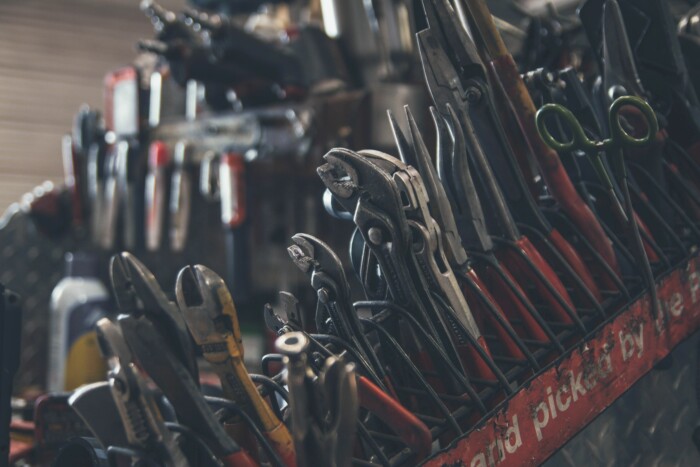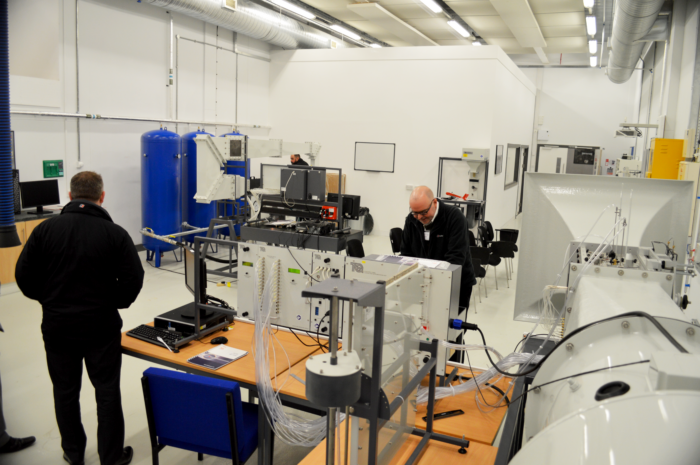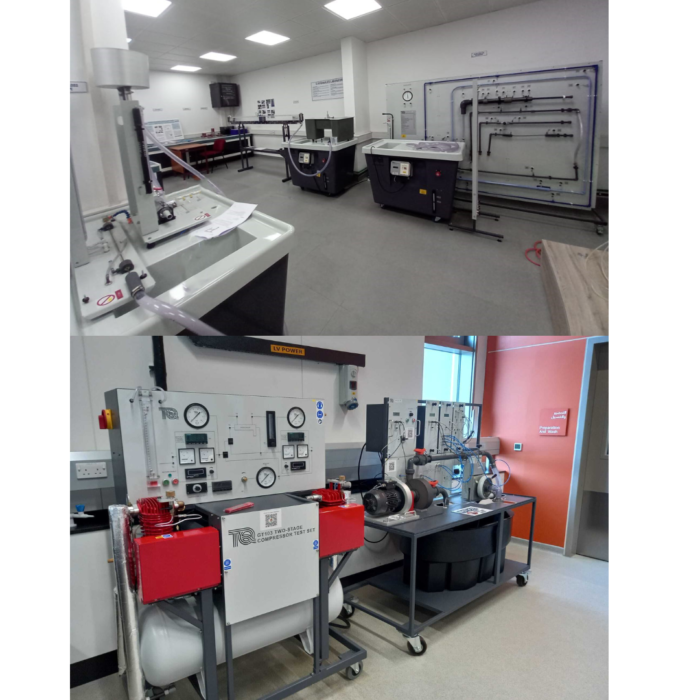Why there is a STEM Gender Gap
For America, over the last three decades, STEM outreach and interventions have increased, but inequality remains as in 2019 women made up only 27% of the STEM US labour market, and only 5% of that consisted of women of colour. This trend is also apparent in other countries, as women only make up 35% of the labour market in Austria, 40% in the UK, 44% in Portugal, 15% in the UAE [1] and 21% in Asia [2].
Kuchynka, Eaton and Rivera highlight that this inequality is down to variables within the macrosystem – cultural elements affecting childhood development, and microsystem representing an individual’s immediate environment during early development, such as family, school, and peers [3].
Looking into Bronfenbrenner’s ecological theory and the social psychological theories of social role theory, social dominance theory and system justification theory, the authors discern that at the macrosystem level, cultural stereotypes and gender-STEM stereotypes “undermine girls but boost boys’ STEM interest and success” and demonstrates how the gender status hierarchy is upheld: male above female, girls having less knowledge in STEM than boys, etc. [4]
Furthermore, looking into the microsystems of explicit and implicit biases, expectancies and attributions, and identity threats, there is the promoted and maintained gender inequality in STEM. The combination of these systems throughout childhood development means that, in comparison to boys, girls will have a lower psychological desire to develop into STEM. These microsystem variables could be that STEM is associated with boys, so parents use less scientific language with daughters compared to sons; boys can speak about their ideas longer in STEM classes than girls; and textbooks depict males and feature little to no women of colour. All this external messaging can negatively affect girls’ desire to pursue STEM.
In comparison to boys, girls will feel “increased STEM anxiety, lower self-efficiency, weaker STEM identities and lower STEM career aspirations” [5] even if, when studying STEM classes during primary, secondary and higher education, they outperform boys. This concludes that the gender gap in STEM pathways is not driven by the differences in natural ability, but rather it is driven by differential socialisation of boys and girls.
Numerous papers agree with this ideology of the macro and microenvironment negatively influencing girls’ interest and beliefs in pursuing STEM as a subject and career. In many countries, the presence of traditional gender roles and stereotypes that focuses on male dominance and intelligence, and female submissiveness and unintelligence regarding subjects like maths and science [6], lead to women losing interest in higher education studies as they move from adolescence to adulthood [7]. Psychologically, women believe they will not succeed in STEM due to innate differences in ability [8], so will choose other subjects than STEM that they will be good at [9].
Furthermore, girls lose interest in STEM topics between 9-12 years old because of microsystems related to family and friends, as their influence or pressure is felt most in adolescence [10]. Materials provided by parents are not STEM focused and peer groups pressure girls into normative behaviours: picking similar activities to their friends, to be liked and “in the group”, which engaging in STEM does not coincide with, as only those who are socially awkward and introverted choose to pursue these subjects.
Therefore, to avoid this social exile, girls will pursue interests that their peers find acceptable and is a reason for the continued disregard for STEM.
Why the gender gap is a problem?
STEM talent is being left untapped, not just in America but globally, and without utilising this knowledgeable workforce we will be unable to address the STEM labour shortages. Recruitment and retention is problematic in the STEM workforce (check out our blog on the gender gap in engineering) but it is vital that underrepresented gender and ethnic-racial groups join this workforce.
STEM training and careers provide many societal benefits; along with reducing labour shortages, it provides opportunities for high-status positions of URG (Universal Rights Group) individuals, stimulates innovation and productivity through global competition and leadership, and promotes sustainable economic growth, something vital for building wealth and achieving economic justice [11].
In addition, the European Union found the top skills shortages are in STEM professions, ICT and medical doctors [12] and that promoting women to go into and develop STEM fields could help boost economic growth “because it is associated with improving employment rates, reducing poverty rates and increasing gross domestic product (GDP) per capita.” [13] STEM professions are the jobs of the future “since innovation is mostly derived from advances in STEM-related disciplines. Employees of STEM occupations help drive innovation and competitiveness by generating new ideas and creating new companies with these new ideas [14].” Therefore, growth is hampered because the creativity, competitiveness and output quality are not being positively challenged by having a diverse workforce.
What could be done to change this?
The paper by Kuchynka, Eaton and Rivera indicates that “STEM learning environments need to be carefully curated so students are not constrained to traditional gender roles and behaviours, which result in unequal intergroup dynamics. There needs to be more adaptive forms of learning that can stimulate interest in STEM.”
To achieve this, the authors proposed seven practice recommendations to improve STEM in K12 education (education that is from kindergarten to 12th grade, or Primary to Secondary school, ages 5 to 18) and three policy recommendations. The practice recommendations centre on ways to increase gender egalitarianism (the belief that all people are equal and deserve equal rights and opportunities), intergroup cooperation and collaboration in STEM K12 learning environments. To perform these practice recommendations, educational policies need to be changed, and the authors suggest increasing teacher autonomy, high-quality training and representation, re-evaluating standardised testing for students and reallocating government funding for public schools
To read more about the theories and recommendations provided, read the full paper here.
Other authors have gone into more detail about solutions and practices available to improve girls’ perceptions of STEM and to advance their studies into this field.
Starting at an early age is desirable; it is essential to work on the stereotype threat so that girls do not lose interest as they grow up because of the cultural patterns associated with segregation. Projects like W-STEM aims to transform the processes of attraction, access and guidance implemented by the higher education institutions to increase the number of women in STEM programs [15].
Other initiatives like “Mind the Gap” try to help teachers find ways to make girls more interested in STEM subjects and motivate them so that they gain enough self-confidence to study STEM degrees. “Computational Thinking for Girls (CT4G)” has girls-only groups participating in activities and seminars related to computer science, which is part of STEM, including programming and robotics [16].
Encouragement to study STEM could also include the use of groups like Code Camp, where girls learn robotics, making video games, programming and making smartphone applications [17]. This can help develop girls’ enthusiasm for STEM because, with hands-on activities, girls explore, ask questions, persist and solve problems and can view STEM as exciting and realistic options for themselves.
So, what are your thoughts on this? Is the gender gap an issue or are there any better solutions to inspiring girls into STEM?
––––––––––––––––––––––––––––––––––––––––––––
[1] ILOSTAT, (2020) How many women work in STEM. Available at: How many women work in STEM? - ILOSTAT
[2] Phanich, T., (no date). Asian women in STEM. Available at: Asian Women in Stem – Asian Youth Act
[3] Guy-Evans. O. (2020) Bronfenbrenner's Ecological Systems Theory. Simply Psychology. Available at: Bronfenbrenner's Ecological Systems Theory | Simply Psychology
[4] Bannikova, Liudmila & Boronina, Lyudmila & Kemmet, Elena. (2016). GENDER STEREOTYPES AND STEM EDUCATION.
[5] Kuchynka, S.L., Eaton, A., and Rivera, L.M. (2022), Understanding and Addressing Gender-Based Inequities in STEM: Research Synthesis and Recommendations for U.S. K-12 Education. Social Issues and Policy Review, 16: 252-288. https://doi.org/10.1111/sipr.12087
[6] de las Cuevas, P.; García-Arenas, M.; Rico, N. Why Not STEM? A Study Case on the Influence of Gender Factors on Students’ Higher Education Choice. Mathematics 2022, 10, 239. https:// doi.org/10.3390/math10020239
[7] Verdugo-Castro, S.; García-Holgado, A.; Sánchez-Gómez, M.C.; García-Peñalvo, F.J. Multimedia Analysis of Spanish Female Role Models in Science, Technology, Engineering and Mathematics. Sustainability 2021, 13, 12612. https:// doi.org/10.3390/su132212612
[8] Pilotti, M.A.E. What Lies beneath Sustainable Education? Predicting and Tackling Gender Differences in STEM Academic Success. Sustainability 2021, 13, 1671. https://doi.org/10.3390/su1304...
[9] de las Cuevas, P.; García-Arenas, M.; Rico, N. Why Not STEM? A Study Case on the Influence of Gender Factors on Students’ Higher Education Choice. Mathematics 2022, 10, 239. https:// doi.org/10.3390/math10020239
[10] Reinking, A., & Martin, B. (2018). The Gender Gap in STEM Fields: Theories, Movements, and Ideas to Engage Girls in STEM. Journal of New Approaches in Educational Research, 7(2), 148-153. doi: 10.7821/naer.2018.7.271
[11] Reinking, A., & Martin, B. (2018). The Gender Gap in STEM Fields: Theories, Movements, and Ideas to Engage Girls in STEM. Journal of New Approaches in Educational Research, 7(2), 148-153. doi: 10.7821/naer.2018.7.271
[12] Kuchynka, S.L., Eaton, A., and Rivera, L.M. (2022), Understanding and Addressing Gender-Based Inequities in STEM: Research Synthesis and Recommendations for U.S. K-12 Education. Social Issues and Policy Review, 16: 252-288. https://doi.org/10.1111/sipr.12087
[13] Munoz Boudet, Ana Maria, Rodriguez Chamussy, Lourdes, Chiarella, Cristina, and Oral Savonitto, Isil. 2021. Women in STEM in ECA. © World Bank.
[14] Pilotti, M.A.E. What Lies beneath Sustainable Education? Predicting and Tackling Gender Differences in STEM Academic Success. Sustainability 2021, 13, 1671. https://doi.org/10.3390/su1304...
[15] Munoz Boudet, Ana Maria, Rodriguez Chamussy, Lourdes, Chiarella, Cristina, and Oral Savonitto, Isil. 2021. Women in STEM in ECA. © World Bank.
[16] Verdugo-Castro, S.; García-Holgado, A.; Sánchez-Gómez, M.C.; García-Peñalvo, F.J. Multimedia Analysis of Spanish Female Role Models in Science, Technology, Engineering and Mathematics. Sustainability 2021, 13, 12612. https:// doi.org/10.3390/su132212612
[17] de las Cuevas, P.; García-Arenas, M.; Rico, N. Why Not STEM? A Study Case on the Influence of Gender Factors on Students’ Higher Education Choice. Mathematics 2022, 10, 239. https:// doi.org/10.3390/math10020239
[18] de las Cuevas, P.; García-Arenas, M.; Rico, N. Why Not STEM? A Study Case on the Influence of Gender Factors on Students’ Higher Education Choice. Mathematics 2022, 10, 239. https:// doi.org/10.3390/math10020239
*Image Hero Images/500px















